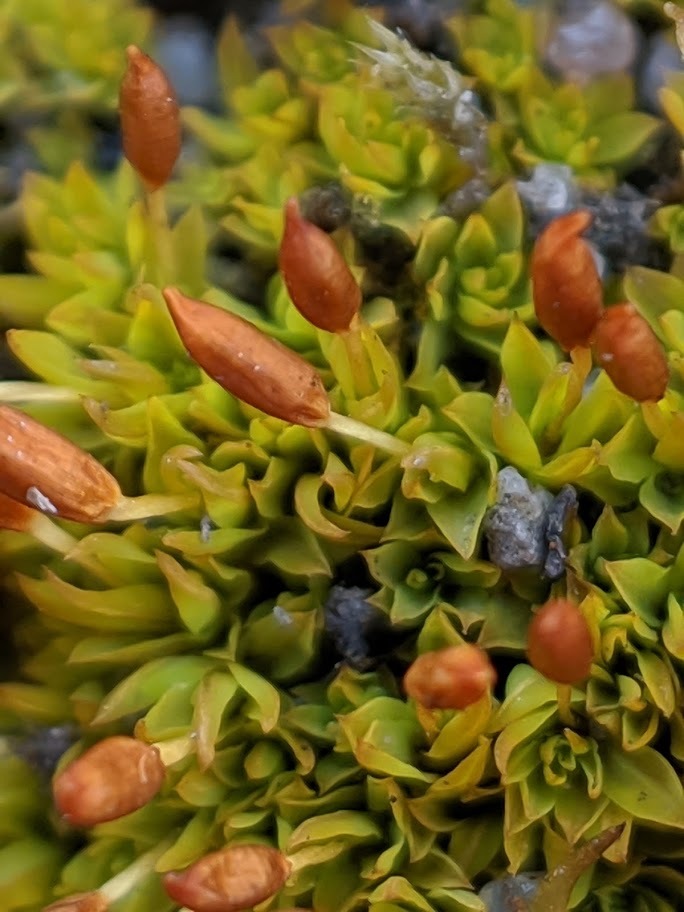Tetrapterum
Autoicous. Asexual propagules absent. Cushions or turves on soil. Stems branching occasionally, glabrous; central strand present; sclerodermis absent or rarely weakly developed; hyalodermis absent or rarely weakly developed. Leaves ovate or oblong-lanceolate to lanceolate or ligulate, erect to erect-spreading when moist, incurved and often spirally twisted around stem when dry; apex obtuse or acute; costa excurrent as a mucro, with quadrate adaxial superficial cells, with a differentiated adaxial epidermis, with an adaxial stereid band, with a hydroid strand, with an abaxial stereid band, with a weakly differentiated abaxial epidermis, with elongate or rectangular abaxial superficial cells; margin entire, plane, without a border; laminal cells in apical half quadrate, hexagonal or rectangular, pluripapillose with branched papillae, with a deep yellow to orange KOH reaction; basal laminal cells differentiated equidistant from base from margin to costa or extending higher along margins, rectangular, smooth. Acrocarpous. Capsule erect, straight, ovoid to ellipsoid, emergent, cleistocarpous, terete (not in Victoria) or with 4 or rarely more (not in Victoria) flat sides, without an annulus. Calyptra cucullate. Peristome absent.
Around seven species, but likely less (Zander 1993), in drier regions of South America, South Africa and Australia; one species in Victoria.
Tetrapterum sullivanii (Müll.Hal.) Broth. is known from the type only and falls within the variation observed in T. cylindricum and is included in T. cylindricum here.
 Spinning
Spinning
